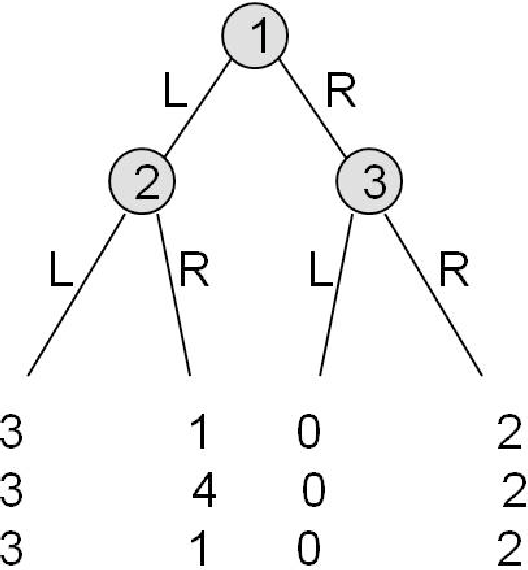Content

A unit of alcohol is 10ml of ethanol and is the standard metric in the UK. The UK government advises people not to drink more than 14 units per week. Therefore, they reduce their demand or drop out of the market entirely. Meanwhile, suppliers find they are guaranteed a new, higher price than they were charging before.

Price ceilings do not simply benefit renters at the expense of landlords. Rather, some renters (or potential renters) lose their housing as landlords convert apartments to co-ops and condos. Even when the housing remains in the rental market, landlords tend to spend less on maintenance and on essentials like heating, cooling, hot water, and lighting. The first rule of economics is you do not get something for nothing—everything has an opportunity cost.
Minimum Wages – Price Floor in Labor Market
Local political movements in a number of U.S. cities have pushed for a higher minimum wage, which they call a living wage. Promoters of living wage laws maintain that the minimum wage is too low to ensure a reasonable standard of living. This might not make sellers any
better off than they were before the price floor – in fact, they could even be
worse off. What producers want government to do is to create a price
floor, also known as a price support. As a result, their total demand for alcohol is substantially less elastic than the lightest drinkers.

However, it continued in a somewhat less restricted form, called rent stabilization, into the 1970s. The minimum wage is intended to prevent people from being paid too little to participate in the free market. Most people will argue that the minimum wage is set far too low; workers who work for minimum wage don’t make enough money to live, let alone participate in the market economy.
The problem is that this creates excessive supply, in which case the government ends up buying and stockpiling the extra quantity. In the end, even with good intentions, a price floor can hurt society more than it helps. It may help farmers or the few workers that get to work for minimum wage, but it does not always help everyone else.
Some Price Controls May Have Some Economic Benefit!
That is, L2 units of unskilled labor are offered at the minimum wage, but companies only want to use L1 units at that wage. Because unskilled workers are a substitute for a skilled workers, forcing the price of unskilled workers higher would increase the demand for skilled labor and thus increase their wages. So far in this chapter and in the previous chapter, we have learned that markets tend to move toward their equilibrium prices and quantities. Surpluses and shortages of goods are short-lived as prices adjust to equate quantity demanded with quantity supplied.
For instance, rent control is imposed to make rent more affordable for tenants. This, of course, leads to new problems, such as a decline in the building of new housing, but governments often do not account for the future. Because politicians serve limited terms, they’re more apt to solve current problems and not worry so much about future problems. As they say, politicians like to kick the can down the road, leading to future problems.
- By the nature of inflation, most employees in the US make above minimum wage.
- The minimum wage is intended to prevent people from being paid too little to participate in the free market.
- Ironically, some of those who do find apartments may actually end up paying more than they would have paid in the absence of rent control.
- A price ceiling keeps a price from rising above a certain level (the “ceiling”), while a price floor keeps a price from falling below a certain level (the “floor”).
For this reason, price floors are sometimes seen as corporate welfare. Popular in professional sports, price ceilings may relate to the maximum amount a single employee may receive in compensation. Consider the agreement between the National Basketball Association and the National Basketball Players Association. The collective bargaining what is price floor agreement between the two associations outlines a number of situations where a player is eligible to receive a maximum salary. Below is a snipped for newer players in the league with less than seven years of service. Today, there are a few instances where a price floor has been imposed, for protecting various groups of people.
Price Ceiling vs Price Floor
While paying fair wages seems like the moral solution, there are many business factors to consider, which have more lucrative incentives to funnel profit to instead. Many US corporations have received criticism for low wages or layoffs while simultaneously paying dividends, stock buybacks, bonuses, and political contributions. The advantage of a price floor is to secure a minimum compensation for the suppliers in the markets it is applied. Food production is one of the most important markets protected by price floors and other policies.

Price floor introduction, types of a price floor, price floor effects on consumers and producers, and the difference between price floor and price ceiling. Government support for corn dates back to the Agricultural Act of 1938 and, in one form or another, has been part of agricultural legislation ever since. Types of supports have ranged from government purchases of surpluses to target pricing, land set asides, and loan guarantees. According to one estimate, the U.S. government spent nearly $42 billion to support corn between 1995 and 2004. Per the federal minimum wage, the minimum annual yield for a full-time working individual is $15,080, which is a little higher than the currently established federal poverty line, hovering around $11,880. From time to time, Congress raises the federal minimum wage in order to keep up with inflation and to reflect other economic developments.
In this instance, it’s important to remember that the workers are the producers, whereas firms are consumers. After all, workers are producing the work, and the firms are consuming it. After all, in many places, it’s hard to find people to work for less than minimum wage, even if a company tried. Maybe you or a friend lives in a place with incredibly high rent, like Manhattan, San Francisco, or (gasp!) London. Needless to say, not everyone can afford to live in these areas, because the rent is simply too high.
Support GPB
Setting the price floor of labor above the equilibrium point can also have other outcomes. It may lead to higher levels of employment despite the higher cost, which may be subsidized by existing benefits such as pension contributions, bonuses, and overtime pay. Although the usual supply and demand mechanism may not apply, the cost may still be incurred in a different way. Price floors set above the equilibrium point can result in higher prices for consumers. For example, if doughnuts sell for $2 each and the price floor is set at $2.50, customers would have to pay an extra 50 cents per doughnut. While the baker may potentially benefit from the higher prices, the customer does not, which is why price floors are often viewed as a form of corporate welfare.
Because price floors are federally mandated, they are important to keep in mind and pay attention to. A price floor is a legally mandated lower boundary or a minimum price for a good, service, or some other commodity in the market. Put another way, a price floor is the lowest possible price that something can be as regulated by the government. In the case of the agricultural industry, producers are further incentivized to oversupply the market because they know the government will purchase excess production. Depending on the good being regulated and the entity doing the regulating, there are several types of price ceilings that governments can implement.
It’s easy to confuse price floors and price ceilings, so be sure to double-check your understanding of these price controls when you encounter them. While price ceilings might seem to be an obviously good thing for consumers, they also carry long-term ramifications. Certainly, costs go down in the short run, which can stimulate demand.
Price Floor Effects
A few other counties and cities in the United States also have price floors on the sale of cigarettes and other tobacco products. Price floors on products such as tobacco and alcohol are aimed at reducing demand for products considered harmful to consumers. States have various, higher minimum wages, but paying an employee less than $7.25 an hour would be illegal. Price ceilings and price floors are both types of price control put in place by the government. Almost every industrialized country in the world has a federal minimum wage set.
So even if, on average, farm incomes are adequate, some years they can be quite low. If demand shifts from D0 to D1, the new equilibrium would be at E1—unless a price ceiling prevents the price from rising. If the price is not permitted to rise, the quantity supplied remains at 15,000. However, after the change in demand, the quantity demanded rises to 19,000, resulting in a shortage. In the case of minimum wage, the price floor is set by both the federal government, which can be exceeded by the state government. The minimum wage reduces the demand for labor (from Q to Q2), while the supply of labor or workers increases from (Q to Q3).
Governments often seek to assist farmers by setting price floors in agricultural markets. A minimum allowable price set above the equilibrium price is a price floor. With a price floor, the government forbids a price below the minimum. The government intervenes in the labor market by setting a price floor with regards to the minimum amount an employer can pay someone for work.
Tell me that I can’t charge more than a billion dollars for this book (which is being given away for free), and it won’t affect the price charged or the quantity traded. Thus, the important case of a price ceiling is one that is less than the equilibrium price. To see why, we need
to consider the response of consumers and of producers to the increase in price.
The economic theory of price floors actually backs up the claim against the minimum wage. Any disruption from free-market equilibrium creates inefficiency, such as a surplus of labor or as it is known, unemployment. By the nature of inflation, most employees in the US make above minimum wage. If the minimum wage were removed there would be more demand for labor, however, the wages may be so low that workers choose not to supply their labor. Let’s suppose that the minimum wage lies just slightly below the equilibrium wage level.
That said, workers usually benefit from price floors (they are technically types of producers, even if they work for companies rather than for themselves). Price floors mandate minimum purchase prices for various goods or for labor. Producers — such as goods manufacturers, farmers, etc. — don’t always benefit or lose when price floors are implemented. In fact, price floor results or effects for producers are usually ambiguous.
